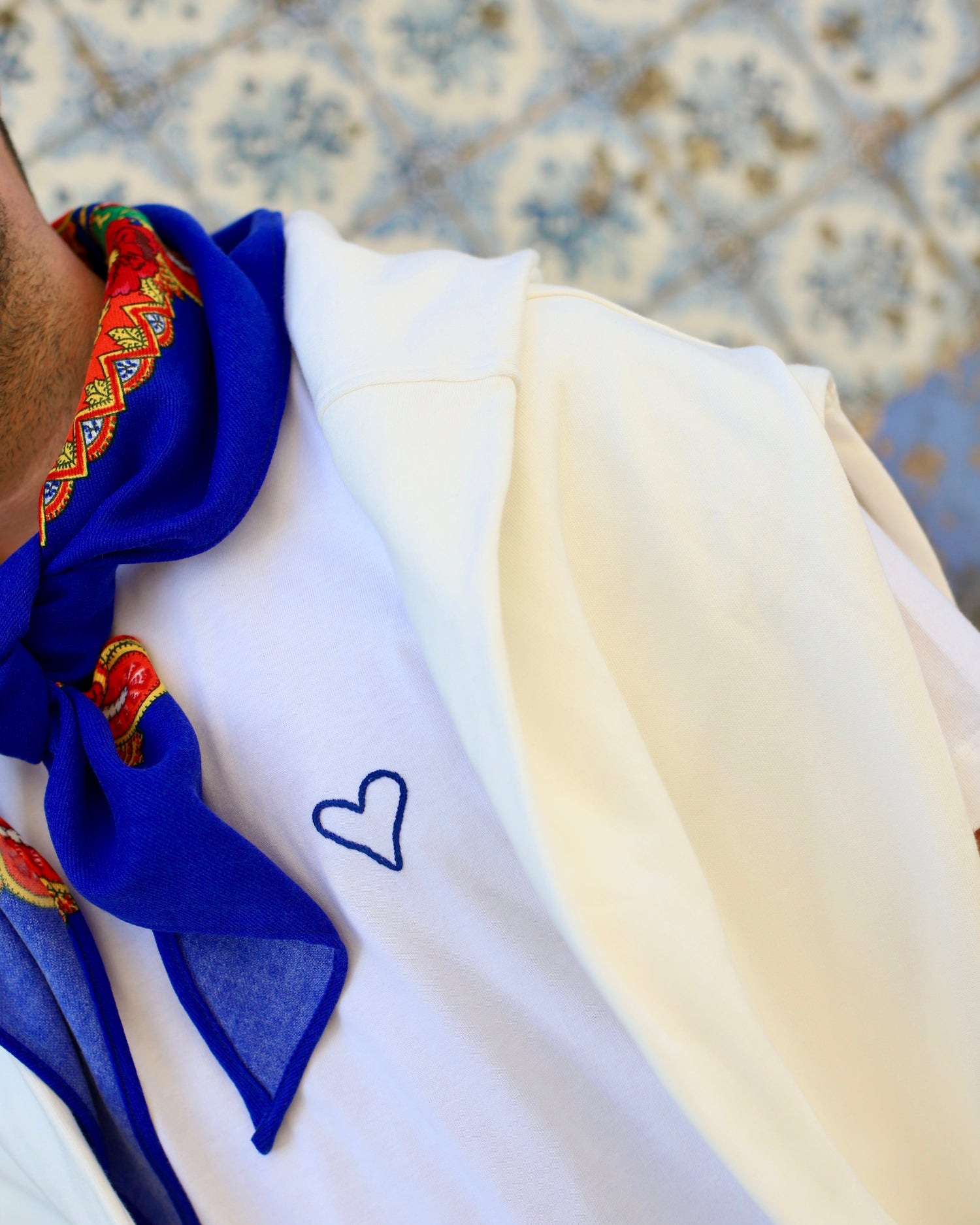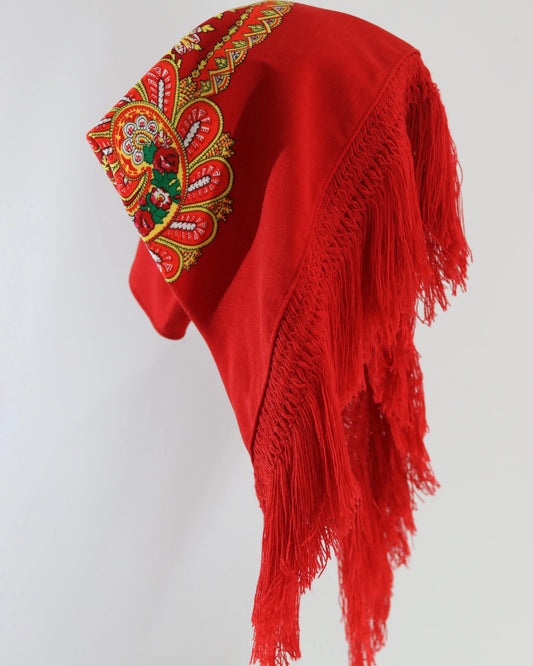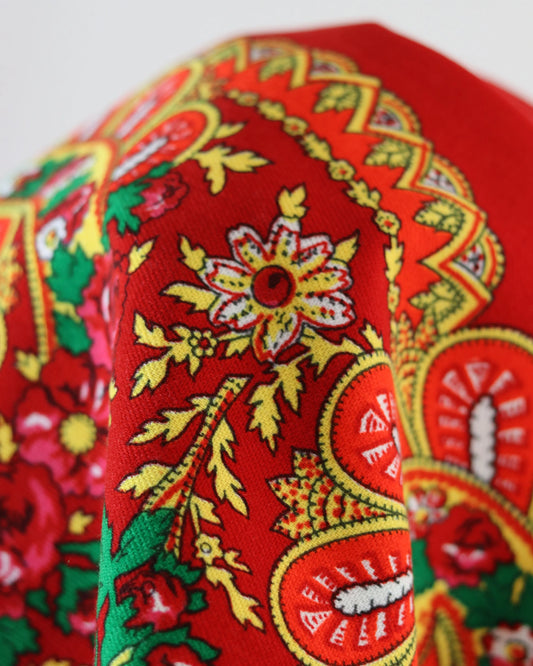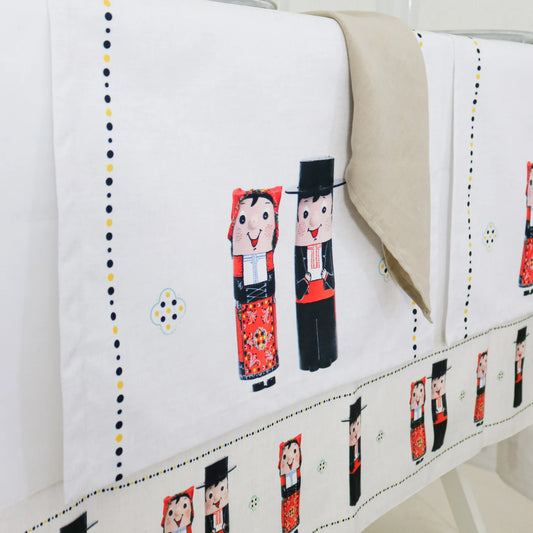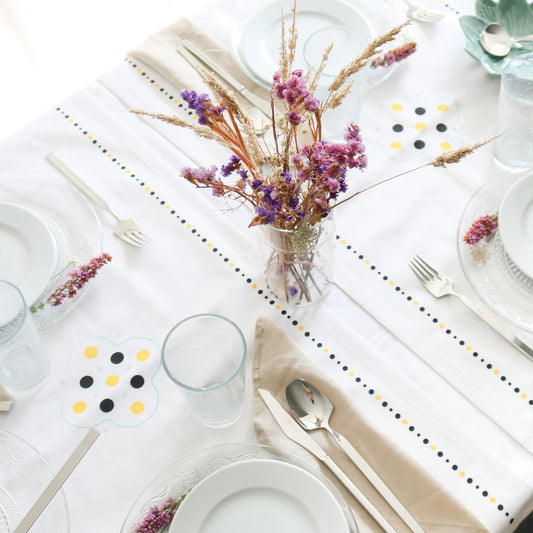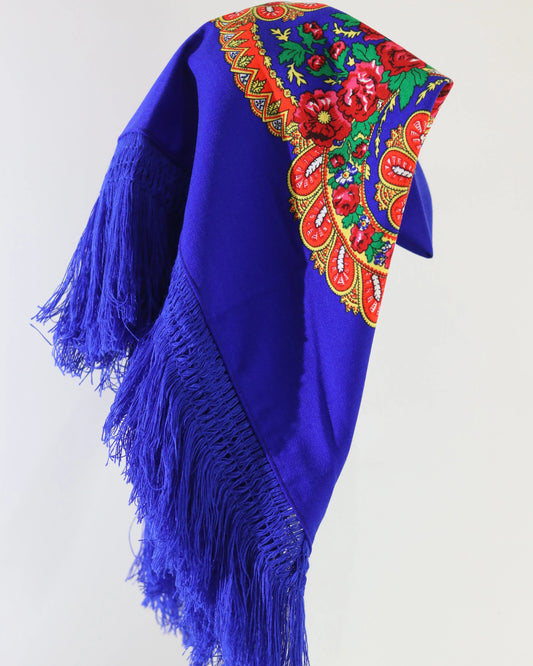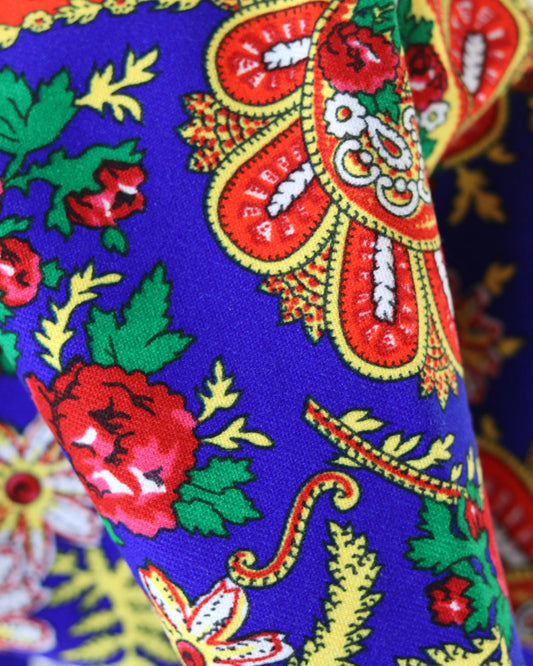Discover the love stories that were born at the agony parties
Some cities have a unique pulse when August arrives. Viana do Castelo is one of them. The air stirs with the beat of bass drums, full skirts cut across the ground, gold gleams in the sun, and the Lima River casts a light on everything that happens along its banks. Amidst the scuffles and the smell of caldo verde and sardines, something passes from ear to ear: how many romances began here, at the Festas d'Agonia?
This rumor is well-founded. It's not just about music, processions, and fireworks; it's about encounters. Over the decades, the festival has served as the setting for glances that met, dance steps that forged promises, letters exchanged in secret, and weddings that are now part of many families' histories.
This is what we're talking about: loves born with the touch of Zés Pereiras, the rhythm of the accordions and the tide that enters the port.
A scenario that calls people to each other
The festival is a social device, a kind of living laboratory where everything conspires to bring people together. The historical-ethnographic procession, the stewardesses with gold on their chests, the giants, the big heads, and the salt carpet are more than tradition; they function as a common language. It's easier to strike up a conversation when everyone shares the same amazement.
The spaces do the rest. Praça da República becomes a meeting point. Campo d'Agonia, next to the sanctuary, throbs with retinas and laughter. The waterfront invites a leisurely stroll toward the iron bridge over the Lima River, and night brings the fire on the river that holds every pair of eyes for endless minutes.
When popular rhythms begin, barriers fall. The vira gives way to a "will you dance with me?" that might otherwise seem out of place. It's not just the choreography. It's the code. Those arriving from outside quickly realize that here, we dance together, that the circle has room for one more.
Meetings to the sound of vira
Each generation has its own way of joining the party. Some go for the faith, some for the music, some for the fellowship. The effect on relationships is universal.
- The rallies that cross neighborhoods and parishes bring young people and visitors together, tacitly authorizing dance invitations and exchanges of smiles.
- Nighttime festivals shorten distances. Popular music and concertinas create immediate points of contact.
- The Procession to the Sea, with its decorated vessels, instills an emotion that, shared side by side, becomes indelible. It's not uncommon for someone to offer a coat, a scarf, or a place on the pier railing. Small gestures that spark conversation.
There's also the complicity of those who return year after year. That girl friends introduced one summer, the boy who photographed the fire near the bandstand, the student who came with the tuna and ended up learning the vira in a hurry. Reunions become inevitable and, with luck, desired.
Five stories that remained
Party love stories are not all alike. Some were born from a stolen glance, others from a missed encounter he insisted on bridging.
-
- Maria, Meadela's steward, wore the family gold on her chest. Antônio, a fisherman, had just returned from a long campaign. They met in the sanctuary's courtyard. He offered her a grilled sardine on a piece of cornbread, and they laughed at the unceremonious gesture. They danced twice that day. They were married the following year. For decades, Maria would attend the Feasts wearing the same gold hoop, a reminder of who put it on her finger.
-
- The post-April 25th revolution brought changes, and with them, friends returning from France. Paula and René met in an unlikely tavern after the procession. She dictated translations of Minho proverbs, and he responded with French puns. They went to Santa Luzia in the late afternoon, saw the city and the sea, and talked until nightfall. The distance between Toulouse and Viana seemed insurmountable; after all, weekly letters and two trips a year were enough to sustain them. The wedding was in August, to coincide with the celebration.
-
- Filipa was a newly relocated teacher in Viana. André played the accordion in a folklore group from Darque. She approached him to ask about the differences between the lavradeira costume and the Viana costume, and he explained more than she had asked. They went out for a caldo verde, returned to the dance, and when the fire on the river started, they shared silence and a coat. Two years later, they opened a small traditional music and dance school. Today, they help teenagers learn steps that, who knows, will be the beginning of other stories.
-
- Joana had been coming with her family since she was little, but that night she decided to go to the waterfront with friends. Miguel, an engineer, had returned from Lisbon to "recollect his memories." A glass fell, they accidentally toasted, and the conversation continued lightly amid the screams that announced each rocket. They exchanged contact details at the end, texting for months. Their first kiss? On the same bench, a year later, with the same band playing "Vira de Viana."
-
- In the aftermath of an unusual period, photographer Catarina decided to document the celebration. Tiago was guiding a boat in the Procession to the Sea. They met on the dock, but it was while editing the images, days later, that their conversation began. They met again at the Crafts Fair the following year. The story is still only a few pages long, but it already has an album.
For those who like to see dates, places and small symbols, it's worth organizing some of these notes.
| Year | Names | Where it started | What's left in your pocket | Today |
|---|---|---|---|---|
| 1958 | Maria and Antonio | Sanctuary courtyard | Piece of cornbread | Grandchildren wearing costumes in the procession |
| 1977 | Paula and René | Tavern next to the square | Napkin with proverb | House overlooking Lima |
| 1999 | Filipa and André | Dance at Campo d'Agonia | Folklore group entrance | School of traditional music and dance |
| 2013 | Joana and Miguel | Marginal, bench next to the bandstand | Coffee token | Weekends divided between Viana and Lisbon |
| 2022 | Catarina and Tiago | Dock, Procession to the Sea | Printed photograph | Work and life album under construction |
They're not characters from a fictional novel. They're recognizable figures in dozens of families who, when gathered around the table, inevitably end up with the same conversation: "Remember that night in August?"
The language of the handkerchief and gold
In Viana, love has its own signs. The handkerchief, embroidered by hand, tells stories in a calligraphy of lines and colors that prefer to say sweetly what the mouth doesn't always dare. Some still keep the handkerchief of lovers from Minho, written with small spelling errors and symbols of intertwined hearts. Giving it is a serious gesture; receiving it with a smile is practically a contract.
Gold is another chapter. The weight of the necklace, the earrings, the Maltese cross—everything speaks of heritage and continuity. It's not about ostentation, but about belonging. Those who join the circle realize that the shine has rituals. There are stories that began with a comment about a specific piece, a grandmother who commissioned it, a promise. Conversations like these bring people together without rushing, respecting the steps of tradition.
There's also the invitation to dance, with its own etiquette. A look, a step forward, an outstretched hand. Many couples say it was this simplicity that sealed their first moment. And, curiously, the moment the music stops for a few seconds creates a deep silence that, at a party, is almost never awkward. It's there that the first "what's your name?", "where do you live?", "shall we dance again?" are exchanged.
The country that comes home
The Festas d'Agonia have a centripetal effect. Emigrants from France, Switzerland, Luxembourg, and Germany plan vacations for August and synchronize their family schedules. Children and grandchildren of Viana residents who grew up elsewhere return for a week, discovering the accent their parents passed on to them and a set of codes that become theirs as well.
This return puts pieces back together in the relationship puzzle:
- Long-distance relationships gain a window of closeness that nourishes the entire year.
- New relationships are born with an implicit bargain of miles and times, but with the advantage of a fixed meeting point on the calendar.
- Families who had never seen each other before gather on balconies, share caldo verde after midnight, and introduce friends to friends.
Encounters sometimes have a borderline aspect: they blend the urban with the rural, the cosmopolitan with the local. It is precisely in the embrace of these differences that many stories grow.
Places where the heart races
For those who enjoy maps, here are some points where things usually happen. It's not an exact science; it's emotional cartography.
- Praça da República: good for restarting conversations interrupted by the procession.
- Campo d'Agonia: magnetic center of dancing, gastronomy and reunions.
- Riverside and Eiffel Bridge: the best area for a fire on the river, for those who want to share the silence.
- Dock and pier: moment of the Procession to the Sea, with open emotion and moist eyes.
- Jardim da Marina: a breather between stage numbers, ideal for calmer first conversations.
- Santa Luzia Steps: wide view, short sentences, suspended time.
Every place has its time. Some prefer late afternoon, when the light softens; others live for the early morning, when music drowns out any shyness.
How a party turns a date into a commitment
Not everything depends on chance. There are a set of habits that make the transition from "hello" to something more solid more natural. The first is the social ritual of dancing. Dancing in a circle allows conversation to blossom without pressure. The second is sharing food: caldo verde, rissoles, malassadas, cornbread with sausage. Eating together builds trust effortlessly.
The third is in the party calendar itself. Those who schedule "we'll see each other tomorrow at the same time" have a legitimate excuse to repeat the encounter. Repeating the encounter over three or four days cements presences and creates a foundation. When the party ends, what remains isn't a lost contact on a cell phone, it's an intimate apprehension of the other person created in very concrete moments: that music, that smell, that place.
Pocket guide for those looking for romance in August
There are no guarantees, but there are best practices. For those who go in with a willing heart, these may help:
- Go ahead and plan accordingly. Arriving at the last minute takes away your attention and presence.
- Dance. Even if you feel like you don't know how, the circle teaches you.
- Respect each other's bodies and space. An invitation can be declined, and that's part of the party, too.
- Talk about things that have a foundation: family, crafts, local history. The festival offers plenty of topics.
- Please note: Etiquette changes depending on the time and place.
- Make a concrete gesture. Giving a simple handkerchief, a postcard of the city, or a glass of water after the dance creates memories.
- Plan a reunion during the party itself. Four days allow you to build something that will last.
And, if you live far away, have a strategy for later. Share photos, arrange your next visit, schedule a call. Romance requires a schedule and intention.
Behind the scenes that help love
Much of what appears spontaneous is designed to bring people together. Local groups rehearse for months, folklore groups welcome curious visitors, committees organize stages and schedules that encourage encounters. Vendors set up stalls that become rest stops, firefighters help manage the crowds with a smile, Zés Pereiras create beats that make the body want to move.
The party, therefore, creates an expanded choreography where everyone is both an extra and a protagonist. In this environment, speaking is simpler, laughing louder, and a phrase resonates. If only life always had this backdrop, I once heard in line for a fever. It doesn't, so make the most of it.
When the fire in the river ignites promises
There's a story many tell in a similar way, with varying details. The fire on the river begins, the reflection of colors trembles in the waters of the Lima, and two people stand side by side. The sound almost drowns out the conversation, so they whisper in each other's ears. No one can hide the emotion of seeing the sky tear into light, and the touch of one arm in the other seems more natural than on any other day.
That's how it was with Duarte and Soraia in 2006. They came in separate groups, accidentally clinging to the railing of the riverbank, and sharing a bag of lupins someone passed along. The moment the palm trees shot over the bridge, he blurted out that he was making a wish. She, who found anything that smacked of superstition corny, smiled and closed her eyes for a second. She wished that night would continue. It did. A year later, he took out a handkerchief embroidered with a short phrase and a crooked heart. She tucked it into her apron pocket and broke the rule of waiting. She said yes even before the last rocket went off.
The present is also written online
Today, encounters have a digital prologue and an epilogue in photographs. Social media displays costumes, flowers, and posters, and people exchange messages before crossing paths in Praça da República. This doesn't rob them of their magic; it magnifies it. The first contact might happen in a comment about a filigree piece, a video of a beat, a photograph of a salt carpet. The second, at a dance. The third, at the corner café with a freshly baked cornbread.
Some organize dancing groups, share tips on where to best see the Procession to the Sea, and identify with old images from local newspapers. Each click is a small bridge over the Lima River. When the day arrives, the city welcomes digital tours and gives way.
The parties within the party
The grand pilgrimage always has side events that function as small living rooms. There are costume discussions, a photography exhibition that revisits the festival's history, and embroidery workshops that explain stitches and patterns. In a smaller space, conversation flows easily.
For those seeking affinity, these moments are precious. Talking about a book found at a local secondhand bookstore, commenting on a song your grandmother sang, asking about the origin of an embroidery motif—all of this reveals interests and fosters complicity. And, unintentionally, it creates a network that sustains the encounter beyond the euphoria of the country fair.
Still a story, to close your eyes and listen to the sound
Ana's grandmother used to say that love likes to be called by its name in August. One such afternoon, with the heat already calling for shade, Ana climbed the Santa Luzia steps with Rui. They had met the night before at an impromptu dance next to the bandstand. They climbed slowly, talking through laughter and silence. Up above, the city stretched out in blues and greens, Lima shining like a silver thread stretched across the map.
He pulled a crumpled note from his pocket with a hastily written sentence: "If we dance again tomorrow, I'll stay." They danced. He stayed. And every year, when the first snare drum sounds and the first rocket streaks across the sky, they climb those stairs again. Just to confirm that the view remains the same and that their hearts, without asking permission, continue to beat to the rhythm of the party.



